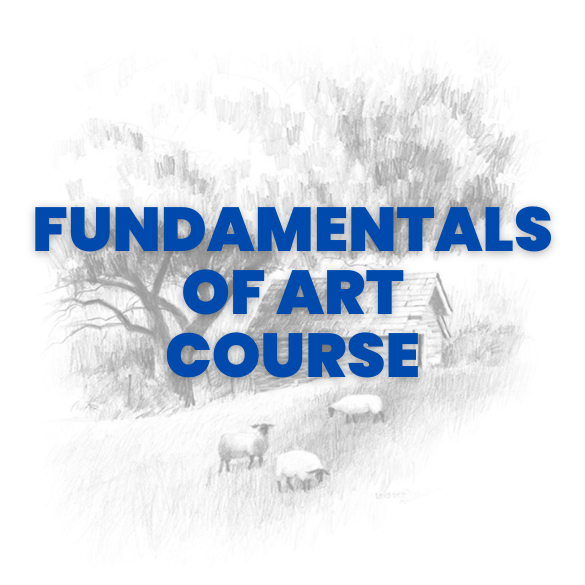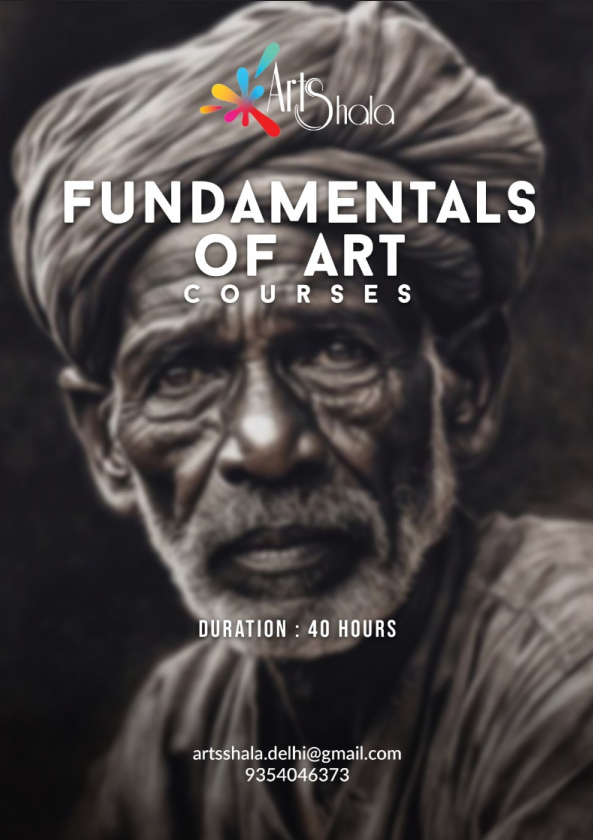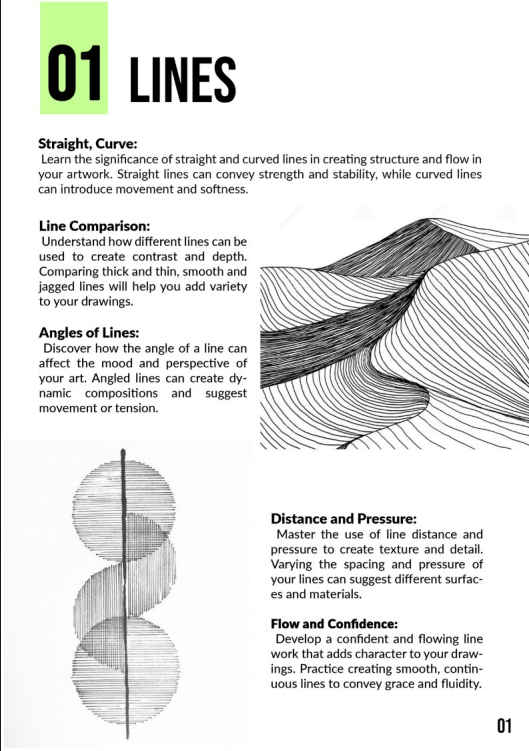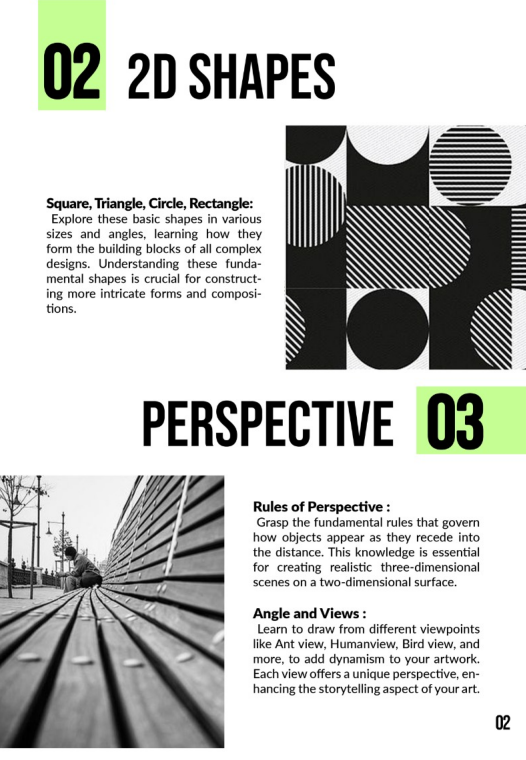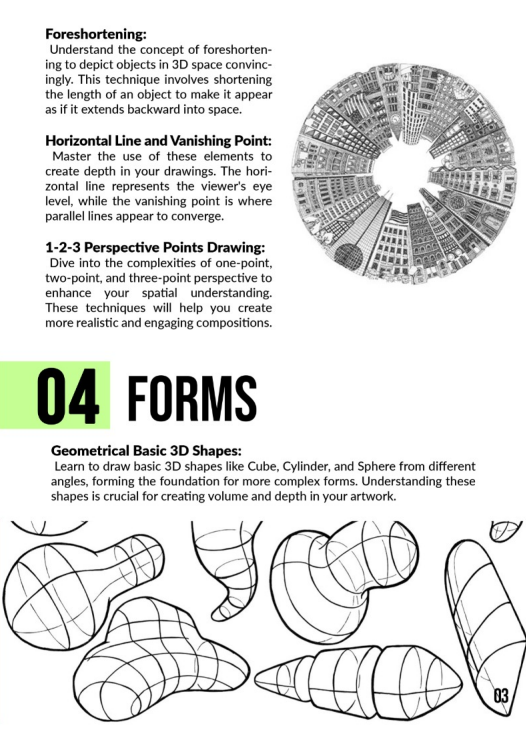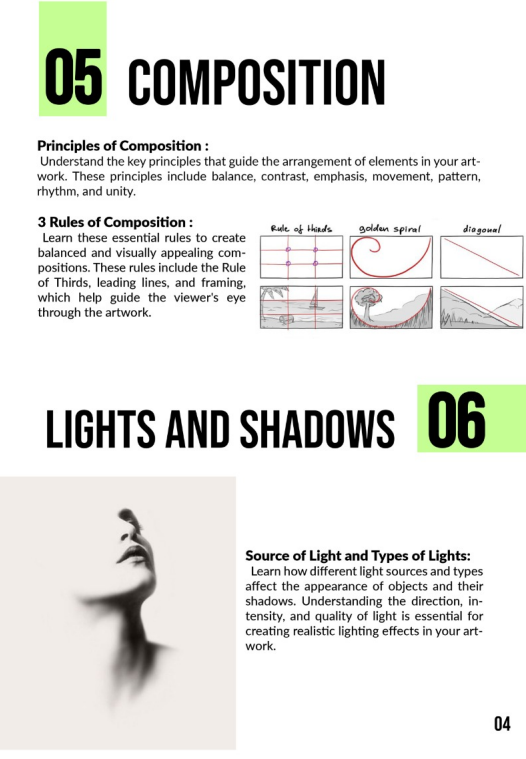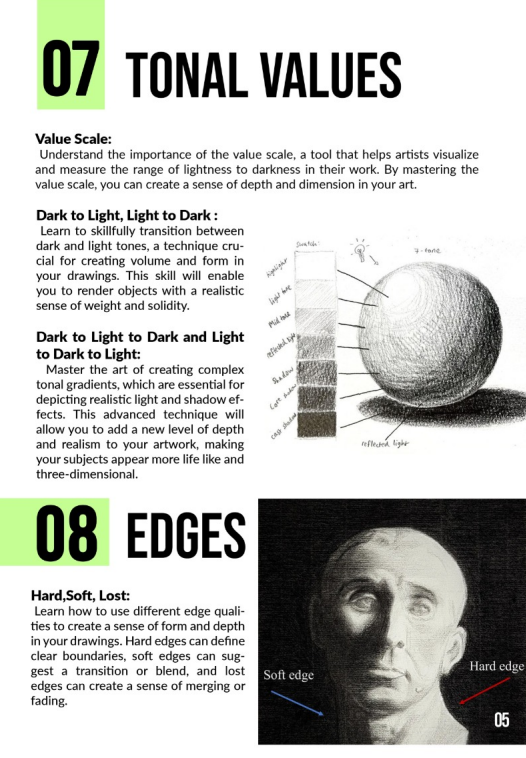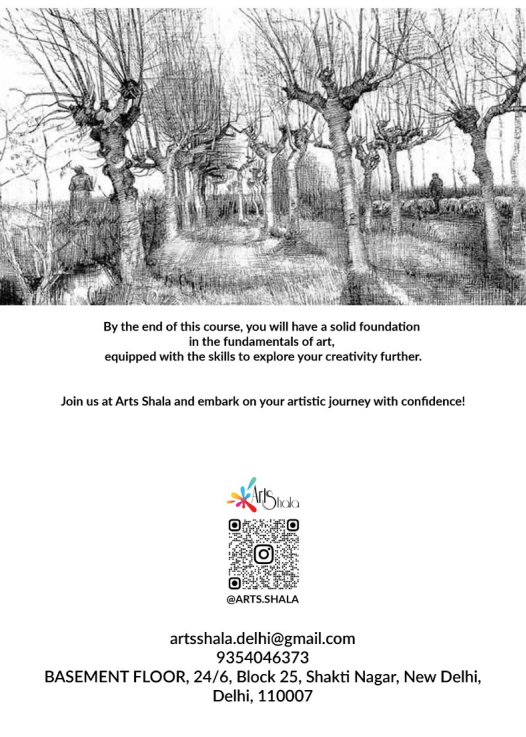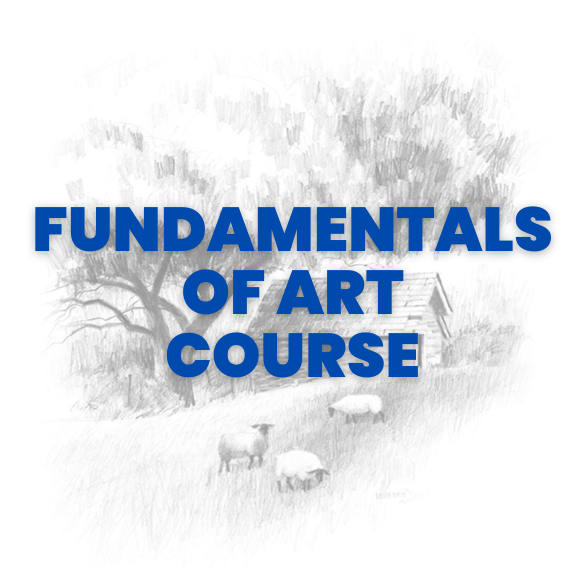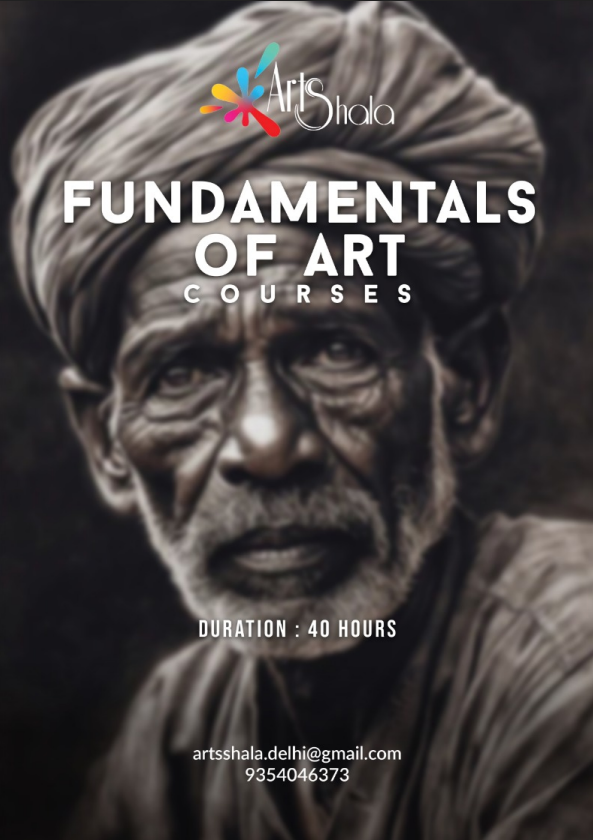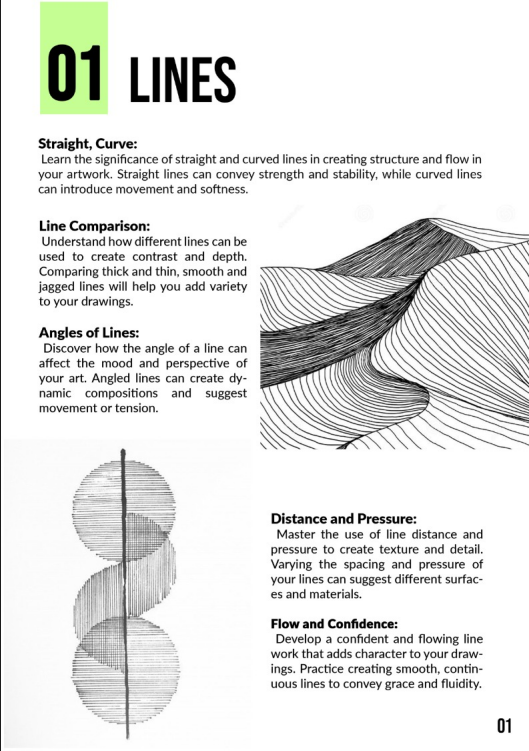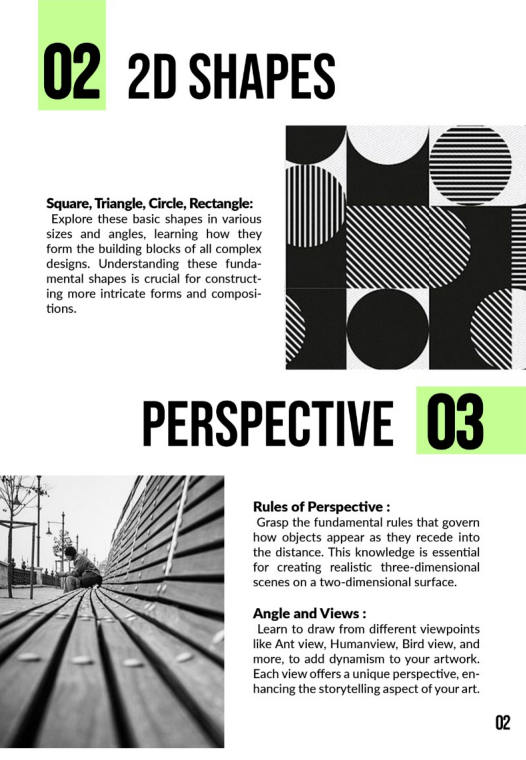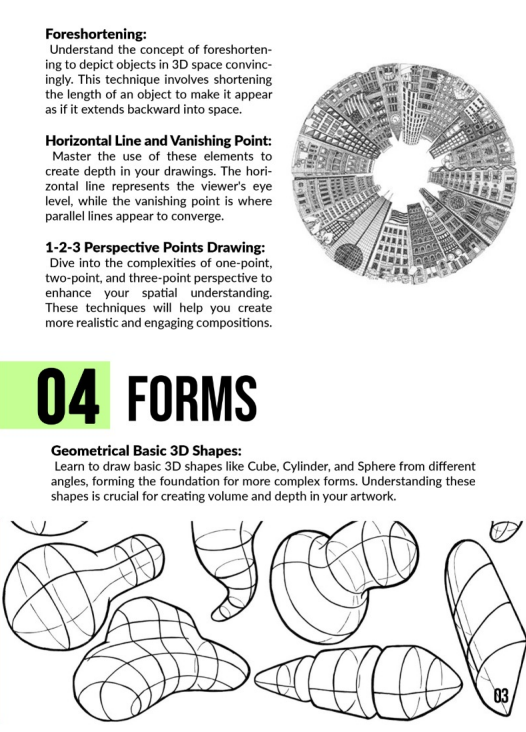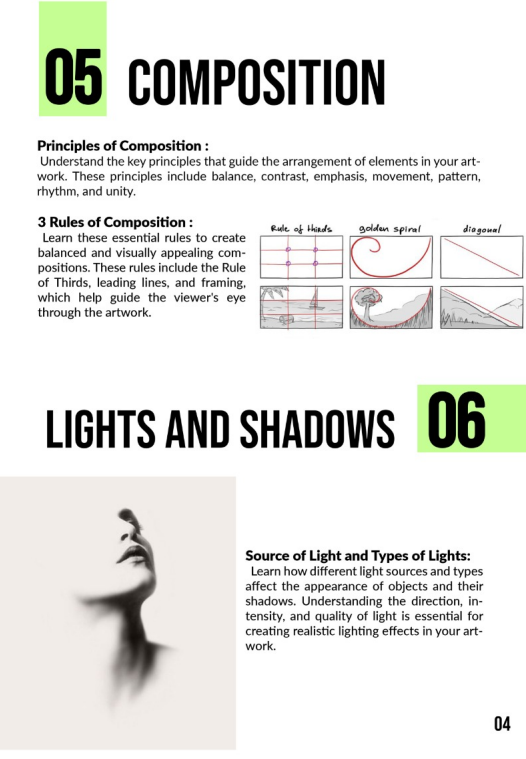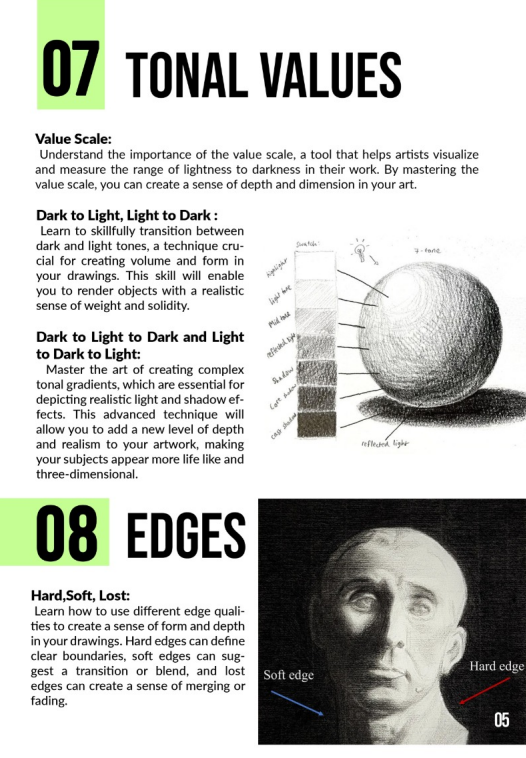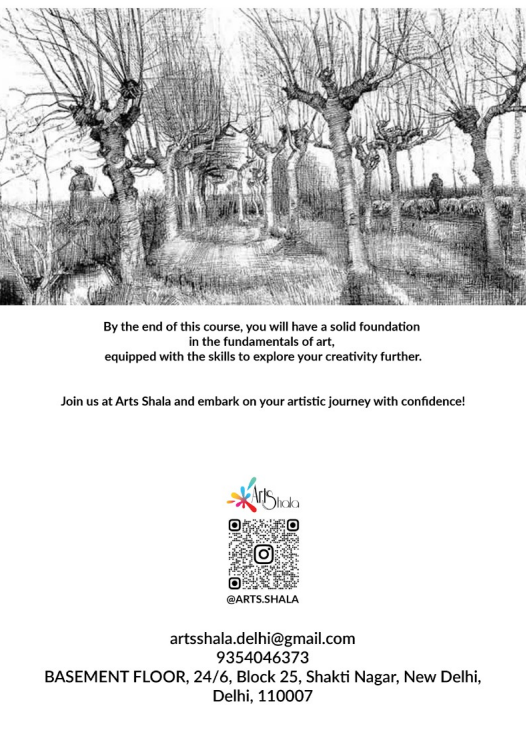Welcome to Arts Shala, one of the premier art studios in Delhi! We are thrilled to offer our new course, "Fundamentals of Art," designed specifically for beginners. This course is a comprehensive introduction to the world of art, providing students with the foundational skills and knowledge needed to embark on their artistic journey. Whether you're a complete novice or looking to refresh your basics, this course is tailored for you.
What the Course Includes:
-
Lines:
-
Straight, Curve: Learn the significance of straight and curved lines in creating structure and flow in your artwork. Straight lines can convey strength and stability, while curved lines can introduce movement and softness.
-
Line Comparison: Understand how different lines can be used to create contrast and depth. Comparing thick and thin, smooth and jagged lines will help you add variety to your drawings.
-
Angles of Lines: Discover how the angle of a line can affect the mood and perspective of your art. Angled lines can create dynamic compositions and suggest movement or tension.
-
Distance and Pressure: Master the use of line distance and pressure to create texture and detail. Varying the spacing and pressure of your lines can suggest different surfaces and materials.
-
Flow and Confidence: Develop a confident and flowing line work that adds character to your drawings. Practice creating smooth, continuous lines to convey grace and fluidity.
-
2D Shapes:
-
Square, Triangle, Circle, Rectangle: Explore these basic shapes in various sizes and angles, learning how they form the building blocks of all complex designs. Understanding these fundamental shapes is crucial for constructing more intricate forms and compositions.
-
Perspective:
-
Rules of Perspective: Grasp the fundamental rules that govern how objects appear as they recede into the distance. This knowledge is essential for creating realistic three-dimensional scenes on a two-dimensional surface.
-
Angles and Views: Learn to draw from different viewpoints like Ant view, Human view, Bird view, and more, to add dynamism to your artwork. Each view offers a unique perspective, enhancing the storytelling aspect of your art.
-
Foreshortening: Understand the concept of foreshortening to depict objects in 3D space convincingly. This technique involves shortening the length of an object to make it appear as if it extends backward into space.
-
Horizontal Line and Vanishing Point: Master the use of these elements to create depth in your drawings. The horizontal line represents the viewer's eye level, while the vanishing point is where parallel lines appear to converge.
-
1-2-3 Perspective Design: Dive into the complexities of one-point, two-point, and three-point perspective to enhance your spatial understanding. These techniques will help you create more realistic and engaging compositions.
-
Forms:
-
Geometrical Basic 3D Shapes: Learn to draw basic 3D shapes like Cube, Cylinder, and Sphere from different angles, forming the foundation for more complex forms. Understanding these shapes is crucial for creating volume and depth in your artwork.
-
Composition:
-
Principles of Composition: Understand the key principles that guide the arrangement of elements in your artwork. These principles include balance, contrast, emphasis, movement, pattern, rhythm, and unity.
-
3 Rules of Composition: Learn these essential rules to create balanced and visually appealing compositions. These rules include the Rule of Thirds, leading lines, and framing, which help guide the viewer's eye through the artwork.
-
Lights and Shadows:
-
Source of Light and Types of Lights: Learn how different light sources and types affect the appearance of objects and their shadows. Understanding the direction, intensity, and quality of light is essential for creating realistic lighting effects in your artwork.
-
Tonal Values:
-
Value Scale: Understand the importance of the value scale, a tool that helps artists visualize and measure the range of lightness to darkness in their work. By mastering the value scale, you can create a sense of depth and dimension in your art.
-
Dark to Light, Light to Dark: Learn to skillfully transition between dark and light tones, a technique crucial for creating volume and form in your drawings. This skill will enable you to render objects with a realistic sense of weight and solidity.
-
Dark to Light to Dark and Light to Dark to Light: Master the art of creating complex tonal gradients, which are essential for depicting realistic light and shadow effects. This advanced technique will allow you to add a new level of depth and realism to your artwork, making your subjects appear more lifelike and three-dimensional.
-
Edges:
-
Hard, Soft, Lost: Learn how to use different edge qualities to create a sense of form and depth in your drawings. Hard edges can define clear boundaries, soft edges can suggest a transition or blend, and lost edges can create a sense of merging or fading.
By the end of this course, you will have a solid foundation in the fundamentals of art, equipped with the skills to explore your creativity further.


